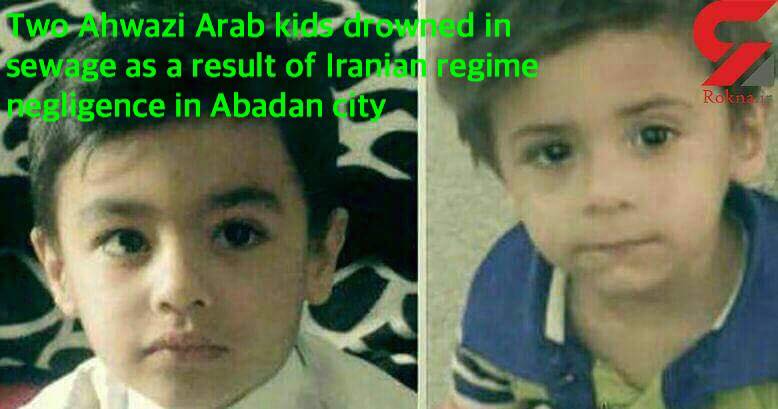Rahim Hamid
Since seizing power in the wake of the 1979 revolution, Iran’s theocratic regime has worked tirelessly to effectively make the Ahwazi Arab population ‘non-people’ and eradicate their history, culture and existence. This is achieved through what are effectively apartheid policies of racial discrimination, importing large numbers of ‘superior’ ethnically Persian settlers to the region; these policies are, of course, familiar, mimicking and often exceeding those of Iran’s rival Israel in brutality and persecution.
In the 39 years since 1979, the regime has fabricated charges against thousands of Ahwazis to justify their arrest, imprisonment and often their summary execution as way of justifying the expropriation of their homes and land; once the indigenous Ahwazi Arabs are dispossessed, regime authorities ‘gift’ their stolen land and homes to the aforementioned ethnically Persian settlers, who receive generous subsidies and grants for moving to the region from other parts of Iran, and are given jobs denied to the native people. Ahwazis are denied the right to compensation or to take any legal action to protest against this grotesque colonialist injustice.
The stolen homes are often razed, with the land used for the construction of ethnically homogenous ‘Persian-only’ settlements provided with the modern amenities denied to the local population, who are forbidden from entering or living there; again, this mirrors the settlement policies of Israel on Palestinians’ land which Iran’s ‘resistance’ regime claims to be morally outraged by.
Another, less obvious but equally lethal, tool used by the regime in its efforts to crush the Ahwazi people is straightforward, very deliberate negligence; despite the Arab region housing over 95 percent of the oil and gas reserves claimed by Iran, which should make it one of the richest areas in the Middle East, Ahwazi communities live in conditions of near-medieval poverty and destitution.
The infrastructure in Ahwazi areas is largely notable only by its absence, with many areas left without clean water by the regime’s very deliberate decision to dam and divert the region’s once-bountiful rivers to other, ethnically Persian areas of Iran. This has also led to choking air pollution as larger and larger areas are desertified by the resulting water shortages, causing massive sandstorms. These sandstorms are in turn made more lethal by the airborne pollution from the oil and gas wells. The refineries are often built on riverbanks, using much of the remaining water in the refining or manufacturing process and pumping untreated toxic chemicals directly back into the water supply, the only source of drinking water for the Ahwazi people, although clean filtered water is pumped to the Iranian settlements, which are carefully maintained.
In a video that has been widely circulated over social media; spreading across Twitter, Facebook, Instagram and other platforms, an Ahwazi citizen in the city of Falahiyeh complained bitterly about the grotesque inhumanity of the regime’s water policy, saying, “In this area there are around ten thousand people, and the regime has cut off water services! We don’t know where the water has gone.”
The interviewee added that the regime’s damming and diversion program isn’t only harming the Ahwazi people but also devastating the natural environment, with the once-lush farmland, along with the marshlands, trees and date plantations, being destroyed by chronic drought and desertification, which is in turn leaving countless former fishermen and farmers destitute. “Look at us! Look at these guys – they’re unemployed” he said, gesturing hopelessly at men nearby.
After decades of enduring the regime’s systematic racist injustice and oppression, with any objection ignored or met with further persecution, anger is growing amongst Ahwazis who increasingly have nothing left to lose, with protesters recently attacking electricity and water facilities supplying the Iranian settlements. Ahwazis accuse the Iranian authorities of very deliberately pursuing a policy of racist discrimination and ethnic cleansing on a massive scale, asserting that its negligence is very much part of a conscious policy, a passive weapon being used, in one analyst’s words, to exterminate the people.
Unsurprisingly, these practices, along with the dilapidated and often collapsed sewage and sanitation networks, which are again reserved for ethnically Persian settlements, have led to widespread serious health problems amongst Ahwazis who are the poorest minority in Iran; heart problems, cancer and respiratory diseases are endemic. Despite this, the health services provided for the Ahwazi people are rudimentary and massively inadequate, with many villages and towns lacking even a doctor or clinic, forcing residents to walk for miles simply to obtain basic healthcare.
The ageing and derelict conditions of the decades-old sewage networks which often overflow and are left unrepaired and uncovered by regime authorities lead to regular horrendous tragic accidents in which young children literally drown in sewage after falling into the open drains whilst playing in the street. Two such accidents have happened in the region in the last week, with two young children dying needlessly after falling into the uncovered manholes.

In one case in December 2017, tragedy was narrowly averted by the father of a four-year-old boy named Amir Hussein after the child fell into an open manhole in a desperately poor area of the town of Khor Mousa to the southeast of the regional capital, Ahwaz.
Local people said that their repeated requests to authorities to cover the open sewers for public health and safety had been ignored. Although they immediately called the local emergency services when the accident happened, the locals said, their calls were again ignored, with the boy’s father climbing into the fetid sewer to rescue his son.
Another young boy, a three-year-old from the Thawra neighbourhood of Ahwaz was, tragically, less fortunate, drowning in the putrid sewage despite desperate efforts to retrieve him after falling in whilst playing in the area outside his family’s home.
No comments:
Post a Comment